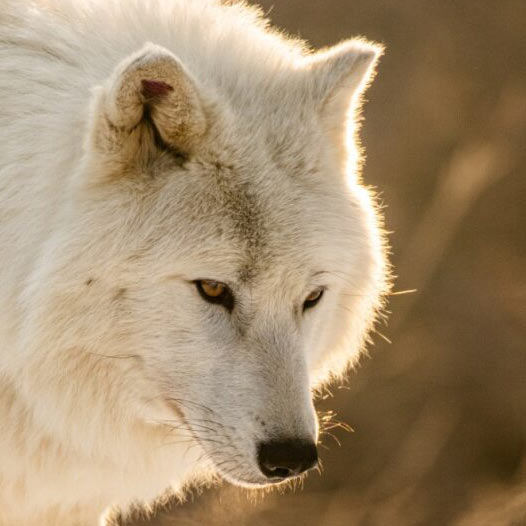TORONTO, ON, Friday, February 7, 2025: It’s Reverse the Red Day and your Toronto Zoo is celebrating alongside partners, civil society organizations, zoos, aquariums, botanic gardens, and communities around the world.
The goal of Reverse the Red is simple but ambitious: we need to stop pushing our environment to the brink and relegating more species into worse status on the International Union for Conservation of Nature (IUCN) Red List of Threatened Species™. To upend species and ecosystem loss, we need systemic change, which is why Reverse the Red brings together a diverse coalition of partners to collaborate, scale up aspirations and impact, and engage people from all walks of life to take action for biodiversity. |
 |
“Conservation is a team sport, and we need more players” says Dolf DeJong, CEO, Toronto Zoo. “It is important we participate in communities like Reverse the Red as these critical collaborations will lead to success in saving and protecting our natural world”.
The IUCN Red List of Threatened Species™ is widely recognized as the most comprehensive, scientifically based source of information on the global conservation status of species, and a critical indicator of the health of the world’s biodiversity. The goal of Reverse the Red is simple but ambitious: we need to stop pushing our environment to the brink and relegating more species into worse status on the IUCN Red List of Threatened Species™.
“Canada’s 2030 Nature Strategy highlights the importance of a whole-of-society approach to combatting biodiversity loss, climate change and pollution” says Dr. Gabriela Mastromonaco, Senior Director of Wildlife Science. “Global initiatives like Reverse the Red are important ways to bring communities together in our fight for a nature-positive future”.
|

|
Reverse the Red’s approach to conservation status improvement is to move as many species as possible away from extinction and on the road to recovery, by successfully implementing plans that allow them to be downlisted at least one step on the IUCN Red List of Threatened Species, with preference given to species that could show tangible progress towards downlisting in a short timeframe and whose conservation efforts would benefit others.
To upend species and ecosystem loss, we need systemic change, which is why Reverse the Red brings together a diverse coalition of leading scientists, advocates, and partners, including your Toronto Zoo, committed to using a data driven and science-based approach to assess, plan, and act for species conservation. Zoos and aquariums are pivotal for partners in this movement, representing skills, resources, and community reach, which is vital in the aim to halt biodiversity decline. By working together, these organizations can have a powerful impact on the conservation and endangered species, contributing to a brighter and more sustainable future for our planet. |
 |
In Canada specifically, over 40% of federally listed species-at-risk require conservation translocations. At your Toronto Zoo, we are proud to be Guardians of Wild. We’re responding in many ways as we assist partners from around the world with species recovery efforts. From reintroducing species through breeding programs, to educating our 1.3 million guests per year about conservation efforts, we’re envisioning and working towards a world where people, wildlife, and wild spaces thrive. With support from conservation partners right here in Toronto, significant progress is being made as we work towards nature recovery targets with conservation organizations, governments, Indigenous knowledge holders, landowners, researchers, and communities coming together to take action. |
Want to learn more about how your Toronto Zoo supports Reverse the Red Day? Join us for a Facebook Live today at 1pm |
Want to learn more about Reverse the Red and how you can make an impact? |
About Reverse the Red
Reverse the Red is a global coalition supported and led by an executive committee: Botanic Gardens Conservation International, HHMI Tangled Bank Studios, IUCN Species Survival Commission, Re:wild, and the World Association of Zoos and Aquariums that ignites strategic cooperation and action to ensure the survival of wild species and ecosystems and reverse the negative trend of biodiversity loss. Through a strategic initiative, Reverse the Red brings together a diverse coalition of leading scientists, advocates, and partners committed to using a data-driven and science-based approach to assess, plan, and act for species conservation. Reverse the Red provides the tools and expertise to empower governments, partners and local communities to set and reach species conservation targets and celebrates and amplifies successful achievements for species.
About Toronto Zoo
The Toronto Zoo’s mission is to connect people, animals, conservation science, and traditional knowledge to fight extinction and our vision is a world where people, wildlife, and wild spaces thrive. An iconic tourist attraction and Conservation organization, the Toronto Zoo boasts a number of leading programs for helping wildlife and their natural habitats – from species reintroduction to reproductive research. A world-class educational centre for people of all ages, the Toronto Zoo is open every day including December 25 and attracts approximately 1.3 million guests each year.
Toronto Zoo is accredited by the Association of Zoos and Aquariums (AZA). The Zoo has also achieved the Canadian Council on Animal Care (CCAC) Certificate of Good Animal Practice® and is inspected by the Ontario Ministry of Agriculture, Food and Rural Affairs (OMAFRA).
Toronto Zoo, 361A Old Finch Ave, Toronto ON, M1B 5K7 View Toronto Zoo’s Privacy Statement
We acknowledge the land we are on is the traditional territory of many nations including the Mississaugas of the Credit, the Anishnabeg, the Chippewa, the Haudenosaunee and the Wendat peoples and is now home to many diverse First Nations, Inuit and Métis peoples. We also acknowledge that Toronto is covered by Treaty 13 with the Mississaugas of the Credit and the Williams Treaty signed with multiple Mississaugas and Chippewa bands. |

|
|
|
|
|
 join ourMEDIA LIST
join ourMEDIA LIST


















